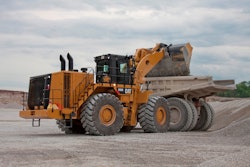
A bipartisan bill introduced in committee earlier this month in both houses of Congress seeks to form a task force that would focus on funding and the construction materials used to build U.S. infrastructure.
According to a report from The Ripon Advance, H.R. 1159, introduced February 13 by Illinois Rep. Rodney Davis, has been named the IMAGINE Act, an acronym for “Innovative Materials for America’s Growth and Infrastructure Newly Expanded”. A bill by the same name has also been introduced to the senate under S. 403 by Sens. Sheldon Whitehouse of Rhode Island and Lamar Alexander of Tennessee.
The Advance reports that should the bill pass, the bicameral task force would be “charged with examining the approval process for infrastructure materials, promote research and development (R&D) of new materials, and increase federal investment in infrastructure projects that use such newly developed construction materials.”
If passed, the bill would also require the U.S. Transportation Secretary to “set up material hubs” throughout the country “to promote the R&D” of new materials.
Here’s more detail about the bill from the Advance, enumerating the specific advances in materials the task force would focus on:
Specifically, the legislation would encourage the development of high-performance asphalt mixtures and concrete formulations, geo-synthetic materials, advanced insulating materials, advanced alloys and metals, reinforced polymer composites and advanced polymers, nanocellulose and wood-based composites, coatings, highly functional adhesives, and other corrosion prevention methods and material or aggregate materials, Rep. Davis said last week.
“Congress should encourage more innovation as we invest in rebuilding our infrastructure and that’s exactly what the IMAGINE Act does,” Davis says, according to the Advance report. “Finding new, more resilient materials will help tax dollars go further and our infrastructure catch up to 21st century transportation needs.”









